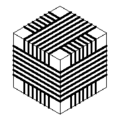Difference between revisions of "2011 Summer project Week Open Source Electromagnetic Trackers using OpenIGTLink"
| Line 18: | Line 18: | ||
The physics of electromagnetic trackers only just works. Tracker designers are continually struggling to get enough signal/noise from a small-enough sensor | The physics of electromagnetic trackers only just works. Tracker designers are continually struggling to get enough signal/noise from a small-enough sensor | ||
at a large-enough distance for a particular application. Magnetic-field distortion adds to the challenges. | at a large-enough distance for a particular application. Magnetic-field distortion adds to the challenges. | ||
| + | |||
| + | Another goal of this project, is to enable researchers to simulate trackers for themselves, to better understand the limits imposed by the physics. | ||
| + | |||
| + | Another goal of this project, is to provide opportunities to gain experience on simple, unusual, and state-of-the-art analog hardware, digital hardware, digital-signal-processing algorithms, electromagnetic modeling, and position-calculation algorithms. | ||
</div> | </div> | ||
Revision as of 02:57, 21 June 2011
Home < 2011 Summer project Week Open Source Electromagnetic Trackers using OpenIGTLinkKey Investigators
- Retired: Peter Traneus Anderson
Objectives
One goal of this open-source electromagnetic tracker project is to extend the tracker simulators in OpenIGTLink, by replacing the simulated position and orientation data with real data from real sensors using real hardware, all open-sourced.
Another goal of this project, is to provide an open forum for tracker designers to discuss the technology in all its aspects. Open-source tracker projects provide a common basis for discussion among tracker designers who are otherwise trapped behind proprietary walls.
The physics of electromagnetic trackers only just works. Tracker designers are continually struggling to get enough signal/noise from a small-enough sensor at a large-enough distance for a particular application. Magnetic-field distortion adds to the challenges.
Another goal of this project, is to enable researchers to simulate trackers for themselves, to better understand the limits imposed by the physics.
Another goal of this project, is to provide opportunities to gain experience on simple, unusual, and state-of-the-art analog hardware, digital hardware, digital-signal-processing algorithms, electromagnetic modeling, and position-calculation algorithms.
